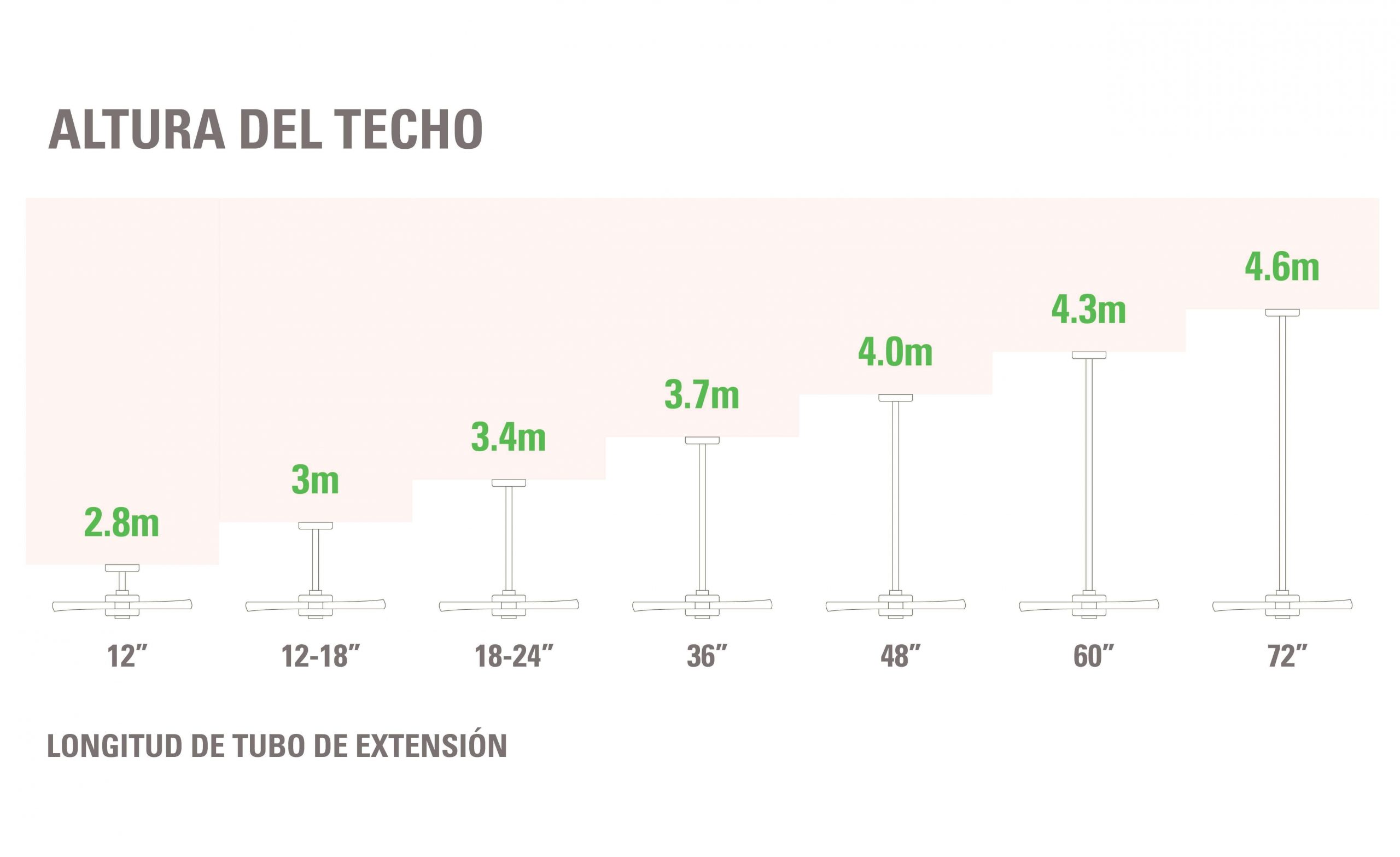
STEP 1. WHERE WILL YOU INSTALL YOUR CEILING FAN?
HOME OR BUSINESS
When choosing the size and design of your ceiling fan for your space, the location is crucial.
Residential Ceiling Fans
Hunter develops residential ceiling fan styles that complement every lifestyle. Innovative features and a wide range of styles, from the most traditional to the modern, are ready to enhance the look of your home.
Industrial Ceiling Fans
Our line of industrial ceiling fans is designed to increase airflow while reducing energy consumption. These HVLS (High-Volume, Low-Speed) fans are incredibly lightweight and circulate more air than any other residential fan on the market. Hunter Industrial fans perform in an ultra-quiet manner, and our excellent warranties are above any in the industry.
HOW TO CHOOSE AN INDOOR OR OUTDOOR CEILING FAN?
Indoor
When the temperature rises in the summer, a ceiling fan can keep your home cool. Similarly, during winter seasons, the fan can distribute the heat evenly in your home. While some outdoor fans can be used indoors, indoor fans cannot be used outdoors.
A fan for indoor use is ideal for a bedroom or a living room. Due to exclusive indoor use, these fans cannot be exposed to humidity or water, so ideally, they should not be installed in bathrooms or laundry rooms. And definitely, they should not be installed outdoors.
Outdoor
When choosing a ceiling fan for an outdoor space, select a model with the appropriate certifications. Otherwise, technical difficulties may arise. For example, if the fan is not suitable for proper outdoor use and is exposed to moisture or rain, some parts of the fan may rust and affect its operation.
Hunter offers fans that are resistant to moisture and others that are resistant to water. Make sure to choose the fan that best suits the area where it will be installed.

MOISTURE-RESISTANT FANS
Designed for use in outdoor spaces with a ceiling, such as patios and porches, or indoor spaces like bathrooms and laundry rooms that are not necessarily exposed to water but may experience humidity. These fans can withstand exposure to moisture and are constructed with stainless steel.

WATER-RESISTANT FANS
Designed for use in outdoor spaces where they may be exposed to various natural elements such as rain or snow. They are ideal for balconies and pergolas and are built to withstand direct contact with water and moisture. These fans are made with moisture-resistant motors and blades for all weather conditions, making them durable and safe to use.

WEATHERMAX® FANS
Hunter WeatherMax fans are built for outdoor areas, with features and technology that go beyond any water-resistant fan. WeatherMax designs are corrosion and salt-air resistant, perfect for properties located on beaches and coasts, or in cold places where snow can affect any equipment. These fans also come with the SureSpeed® warranty for high airflow and speed performance.
STEP 2. WHAT SIZE FAN DO YOU NEED?
For maximum efficiency, choose a ceiling fan with the right size for each space. Installing a fan that is too small for a large area won’t circulate air efficiently, leaving the room feeling less cool. On the other hand, if you install a fan that is too large for a small space, it may overpower the room, even at a low speed. Use our fan size guide to determine the right fit for your space.
THE FAN DIAMETER FOR EACH ROOM SIZE
The amount of air circulating through a fan is determined by its diameter. Large spaces require fans with larger diameters, while small spaces require a smaller fan.
Small spaces
9 square meters or less are better suited with a fan ranging from 30″ to 48″. Fans with smaller diameters are ideal for offices and laundry rooms, for instance.
Large Spaces
37 square meters or less will be better cooled by a medium-sized fan ranging from 48″ to 54″. Medium-sized fans are ideal for living rooms, bedrooms, and kitchens, for example.
Extra-large spaces
More than 37 square meters will require a fan of 56″ or larger. These types of fans are ideal for open-concept spaces and lofts with ample room.
GUIDE TO CHOOSING THE FAN SIZE
This guide will help you choose the right fan size according to the installation space.

STEP 3. WITH LIGHT OR WITHOUT LIGHT?
Ceiling Fans without Light
If you plan to install your ceiling fan in a room with good natural light or another light source, a ceiling fan without a light is a good option.
Ceiling Fans with Light
For spaces with limited natural light, buying a ceiling fan with a light is the best option to consider.
Types of Bulbs
Today’s fans offer a wide variety of light sources, including several energy-efficient options. Here are the most common types of bulbs to consider:
LED
With an average lifespan of 50,000 hours, LED lights are the most energy-efficient option in the market. There is also a wide variety of LED lights in today’s ceiling fans: traditional shape, Edison-style bulbs with bright filaments, and integrated LED discs that are designed never to be replaced.
Fluorescent
Fluorescent bulbs have an average lifespan of around 10,000 hours and are more energy-efficient than incandescent bulbs.
Halogen
With an average lifespan of 1,500 hours, halogen bulbs emit warm light and use about 15% less energy than incandescent bulbs.
STEP 4. WHAT TYPE OF MOUNTING WORKS BEST FOR YOUR SPACE?
Low Profile
It works for spaces with ceilings around 2.4 meters (8 feet) high. This type of low-profile fans is designed to be installed flush with the ceiling, so their blades can be at a safe distance from people.
Standard
Standard mount fans are designed for spaces where the ceiling height is around 2.8 meters (9 feet). Using an extension rod during installation ensures that the distance between the fan and the floor is appropriate (between 2.4 and 2.8 meters from the floor).
For high or sloped ceilings
When the ceiling height is over 3 meters, fans will need to be installed with a downrod. For sloped ceilings that exceed 34 degrees of slope, an adapter must be used to ensure proper fan installation. These types of adapters replace the standard canopy that comes with your fan.
EXTENSION ROD GUIDE

STEP 5. HOW WOULD YOU LIKE TO CONTROL YOUR FAN?
Control your fan according to your preference by choosing a control system that is convenient and works for you. Simple fan controls are based on a wall switch that allows you to turn the fan on and off, and the speed adjustment is done through a pull chain. Hunter’s more advanced control systems allow you to control your fan settings from the wall, a remote control, or even from your mobile device via WiFi.

Chain control
For spaces with low ceilings where you can reach the chain, a fan with a pull chain is an excellent option. Pull chains also work for enclosed outdoor spaces, so you can have the option to adjust the speed without needing a remote control.

Wall Control
Take full control of your fan’s direction, speed, and even dim the light with just a push of a button using a Hunter wall control. This type of control is installed within the wall’s light switch, making it easy to remember where your fan control is located.

Remote control
A hand-held remote provides even more convenience and comfort. Hunter fans with remote control allow you to dim the lights and adjust the fan’s direction and speed with an easy-to-use device from anywhere in your room. Simply keep your remote by your side on the nightstand or table, or even use the included wall mount to have it within reach whenever you need it.

Smart control
Hunter’s SIMPLEconnect® collection of Wi-Fi enabled fans allows you to adjust your fan using a smart device with our SIMPLEconnect app or through the included remote control. Use our technology and your favorite automation system to operate your fan conveniently.
STEP 6. AIRFLOW / EFFICIENCY
CFM
CFM stands for Cubic Feet per Minute, and it refers to how much air a ceiling fan moves. Energy-efficient fans generate higher airflow while consuming less energy compared to standard fans. Hunter fans typically achieve higher CFM than other models by optimizing blade angles and using custom-designed motors.
WHAT IS YOUR BUDGET?
Fans for Every Space and Budget
Hunter designs fans for every space and budget. Shop our fans by price to find the one that fits yours, or explore a wide variety of luxury designs.
Hunter’s innovative designs and pioneering technology breathe life into any space. Committed to excellence, we conduct twice the industry-standard number of tests on each fan to ensure a uniquely class-leading performance. The guide outlined above will help you navigate and know how to choose the ceiling fan that best suits your preferences.

